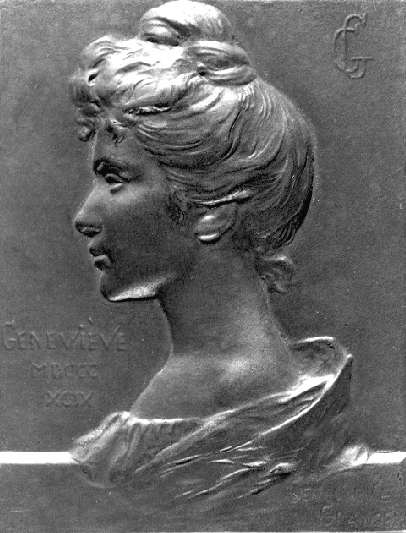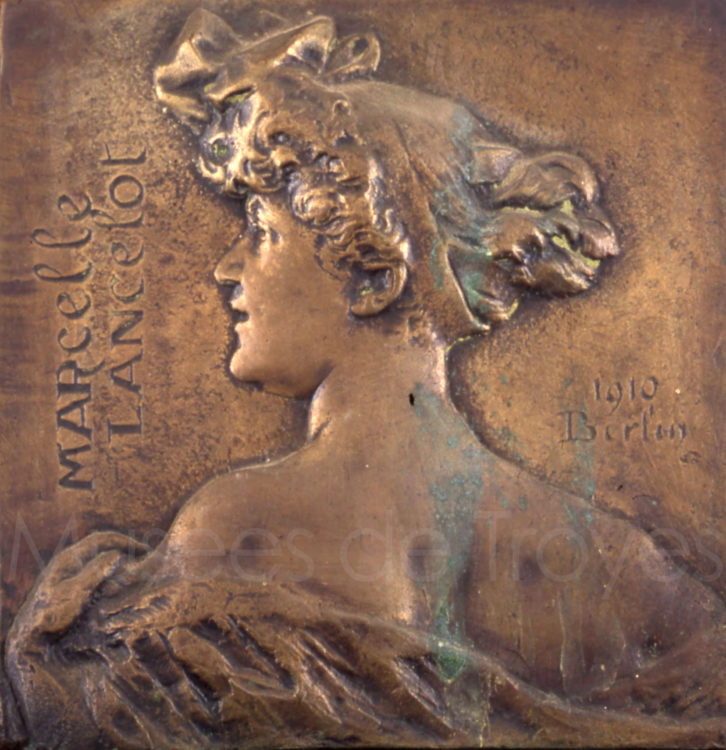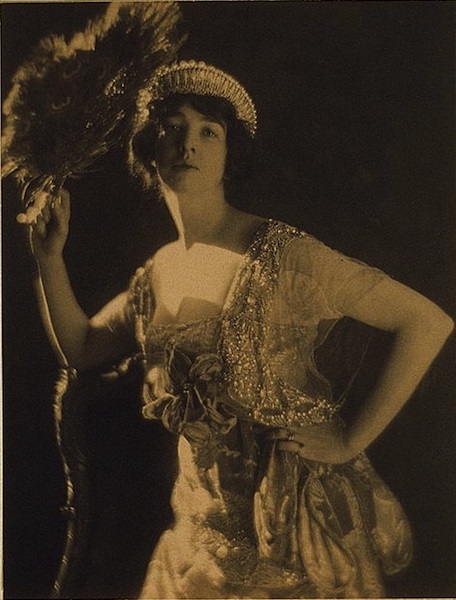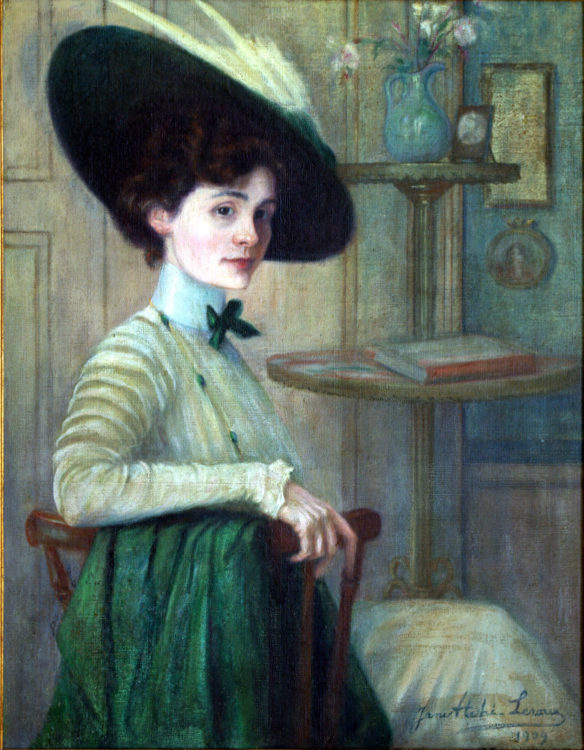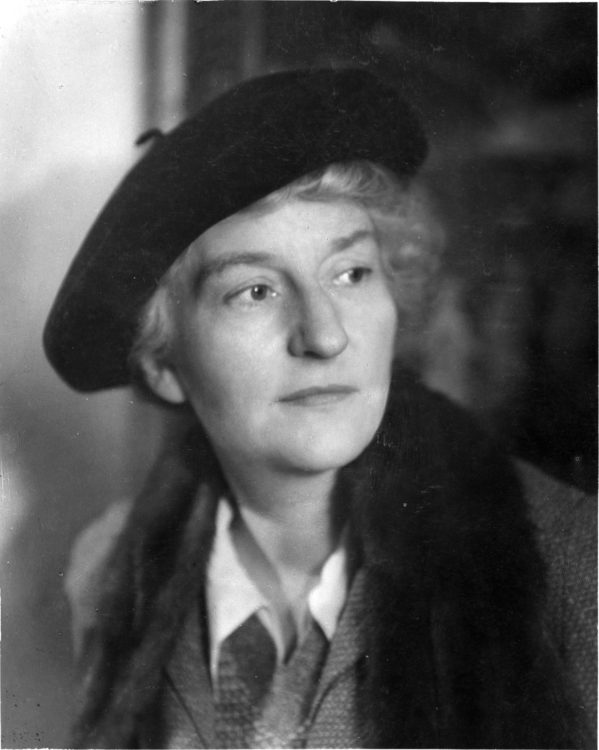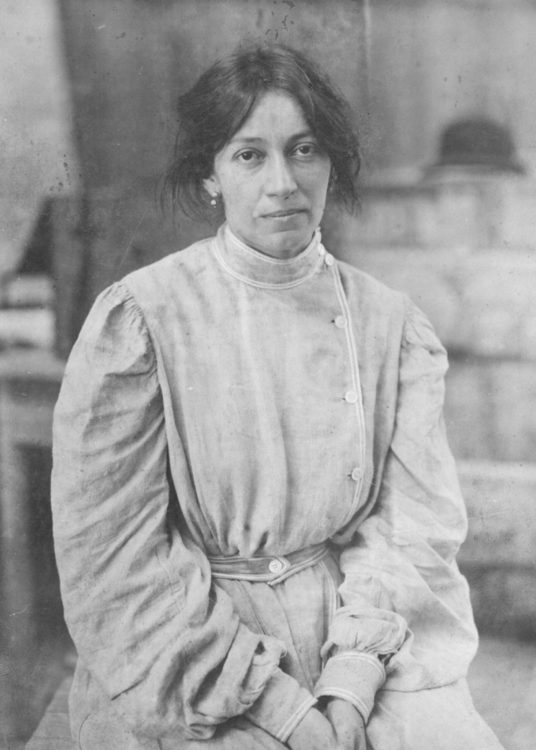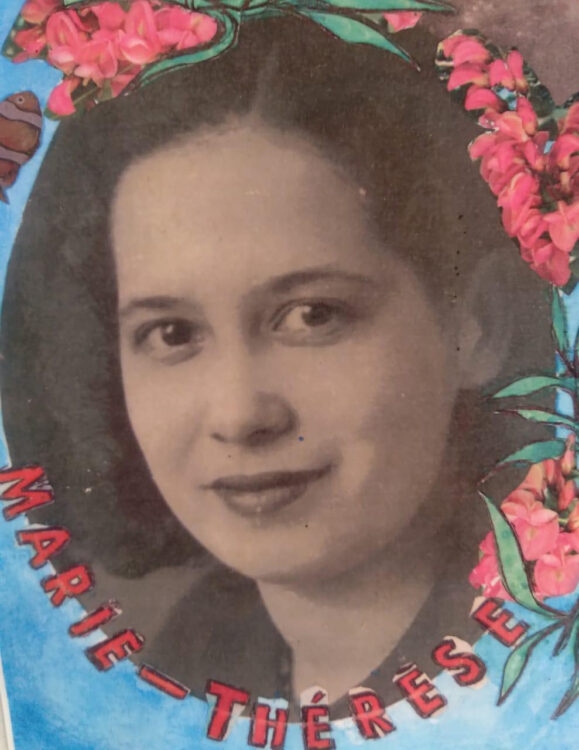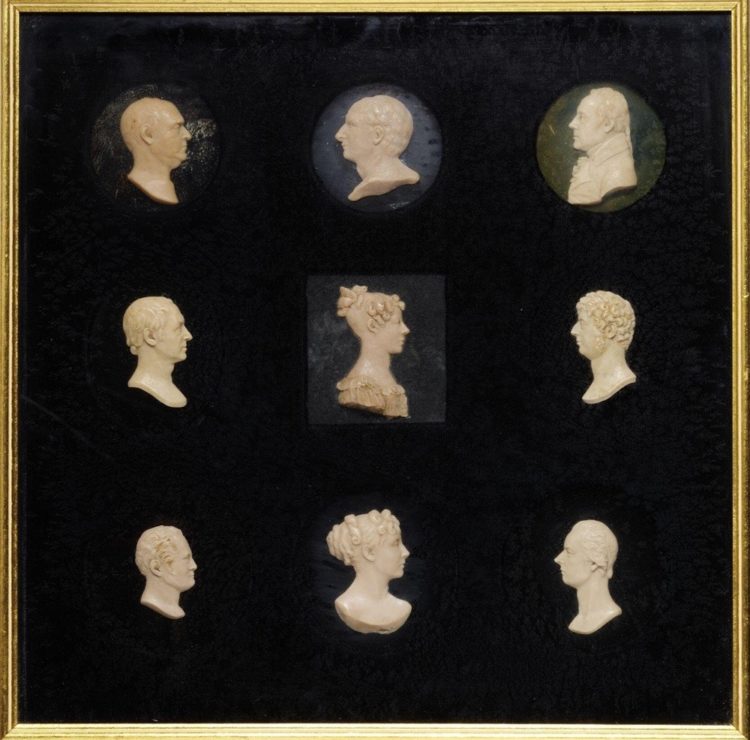Research
“To say that she is a hard worker would be an understatement.” Those are the terms used by Maria Lamers de Vits1 to describe Madeleine Jouvray in her book on sculptresses published in 1905. Nothing destined the Madeleine Jouvray, born in Paris on March 31st 1862 to a family of artisans originally from Lyon, to a career as an artist.
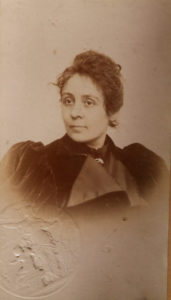
Anonym, Portrait de Madeleine Jouvray, exhibitor’s card at salon of the Société des Artistes Français, 1897, private collection
No books have yet been entirely dedicated to her, which is probably due to the lack of archival material available. Madeleine Jouvray’s name is cited in several studies on Nordic artists in Paris at the end of the 19th century2. They repeatedly question the enigmatic picture that the Finnish painter Magnus Enckell (1870-1925) painted of her and her relationship with the sculptress Sigrid af Forselles (1860-1935). In their research, Anne Rivière and Antoinette Le Normand-Romain emphasized the aesthetic similarities between certain of the sculptress’ works and those of Auguste Rodin and Camille Claudel3. Put into context with the exchange of correspondence between M. Jouvray and Rodin, which is conserved in the musée Rodin – and which reveals the profound admiration the pupil and practitioner had for the master –, these similarities have brought previous studies to consider some of her works as a pale copy of those of the sculptor4 .

Madeleine Jouvray, La Pensée or Tête de femme, 1899, white marble, 47 x 21 cm, musée Jean de La Fontaine, Château-Thierry, © François Blanchetière
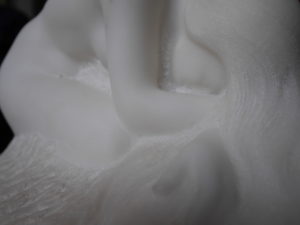
Madeleine Jouvray, Danaïde, 1911, marbre blanc, 25 x 23.5 x 35.5 cm, private collection, © Anne-Laure Huet
First and foremost, this study offers more complete and diversified sources – thanks to in-depth research at the Paris Archives, National Archives and the Museum Historical Collections at musée Rodin – that allow us to get a fresh look at the works of this little known artist. M. Jouvray’s study collection – retrieved during this research – gave us the opportunity to view new documents as well as new works. It is irrefutable that her creations’ aesthetics and themes are often very close to those of Rodin, but one should be careful not to be tempted to over-interpret.
If La Fatalité dated 1901 – conserved at the musée Sully in Châtellerault – is a distinct reference to Rodin’s La Main de Dieu (1896), the latter also seems to be greatly inspired by Jouvray’s La Douleur dated 1886. The uncommon image of a veiled male face – the veil being traditionally a singularly feminine symbol – is reproduced in the Torse de l’âge d’airain drapé carried out between 1895 and 1896. Clearly, these questions as to influence don’t stop with Rodin and Jouvray’s works are comparable to those of other artists of the period. La Pensée (conserved at the Jean de La Fontaine Museum, in Château-Thierry) and Jeunesse (conserved at the musée des beaux-arts Museum in Marseilles) bring to mind the numerous studies of Volubilis by Alfred Boucher. Tête d’enfant – presented at the Salon in 1908 and rediscovered during this research – evidently brings to mind the posture and theme of La Petite Châtelaine by Camille Claudel and confirms a certain influence between the two artists.

Madeleine Jouvray, Tête d’enfant, 1908, patinated plaster, 41 x 34.5 x 20 cm, private collection, © Anne-Laure Huet
Nevertheless, above and beyond these questions of influences, this research highlights the fact that Jouvray’s works should be studied in a broader context, that of symbolist sculpture at the start of the century. The particular nature of this work is that it doesn’t seem to pay attention to taboos imposed upon women at that time, and without it being considered as an actual transgression. She doesn’t hesitate to depict nudes – both masculine and feminine – in sculptural dimensions, whilst always ensuring that it is justified by an allegorical or mythological theme. During her first Salon in 1889, she won a medal of honour for her male nude Douleur d’âme. In 1905, in spite of the sensual and erotic nature expressed by her work La Martinique – an allegory of the town of Saint-Pierre in Martinique which was devastated in 1902 by the eruption of Mount Pelée –, it is particularly well received by the press. Hence, the female body, which is constantly present, the preponderance of themes relating to youth, life, death or even allegories of psyche are elements of M. Jouvray’s work in a larger scope, that of “feminine symbolism5” which was very significant at the start of the 19th century.
Research paper directed by Claire Barbillon and defended by Anne-Laure Huet, in September 2016, at the École du Louvre.
Maria Lamers de Vits, Les femmes sculpteurs, graveurs et leurs œuvres, Paris, Référendum littéraire, 1905, p. 77.
2
Liisa Lindgren, « Sigrid af Forselles and Hilda Flodin, Rodin’s Finnish Students », dans Linda Hinners (dir.), Auguste Rodin (1840-1917) and the Nordic Countrie, exh. cat., Nationalmuseum at Konstakadernien, Stockholm (1 October 2015-10 January 2016) ; Ateneum Art Museum-Finnish National Gallery, Helsinki (5 February-8 May 2016), Stockholm : Nationalmuseum ; Helsinki : Ateneum Art museum-Finnish National Gallery, 2015, p. 143-155.
3
Anne Rivière (dir.), Sculpture’elles : les sculpteurs femmes du XVIIIe siècle à nos jours, exh. cat., musée des Années trente, Boulogne-Billancourt, 12 May-2 October 2011, Paris, Somogy, 2011, p. 264, et Antoinette Le Normand-Romain, « Camille Claudel, ma bien-aimée malgré tout », dans La Rencontre de deux destins, exh. cat., Musée national des beaux-arts du Québec, Québec, 26 May-11 September 2005 ; Detroit Institute of Arts, 2 October 2005-5 February 2006) ; Fondation Pierre Gianadda, Martigny, 3 March-15 June 2006, Paris, Hazan, 2005, p. 97.
4
Emmanuelle Héran, Dominique Lobstein & Anne Rivière, Des amitiés modernes. De Rodin à Matisse, exh. cat., musée d’Art et d’Industrie André-Diligent, La Piscine, Roubaix, 9 March-9 June 2003, Somogy éditions d’art, 2003, p. 228-229.
5
Charlotte Foucher Zarmanian, Créatrices en 1900. Femmes artistes en France dans les milieux symbolistes, Paris, Mare & Martin, 2015, p. 262.
Anne-Laure Huet, "Madeleine Jouvray (1862-1935): a sculptress at the turn of the century." In Archives of Women Artists, Research and Exhibitions magazine, . URL : https://awarewomenartists.com/en/magazine/madeleine-jouvray-sculptrice-tournant-siecle/. Accessed 25 April 2024




